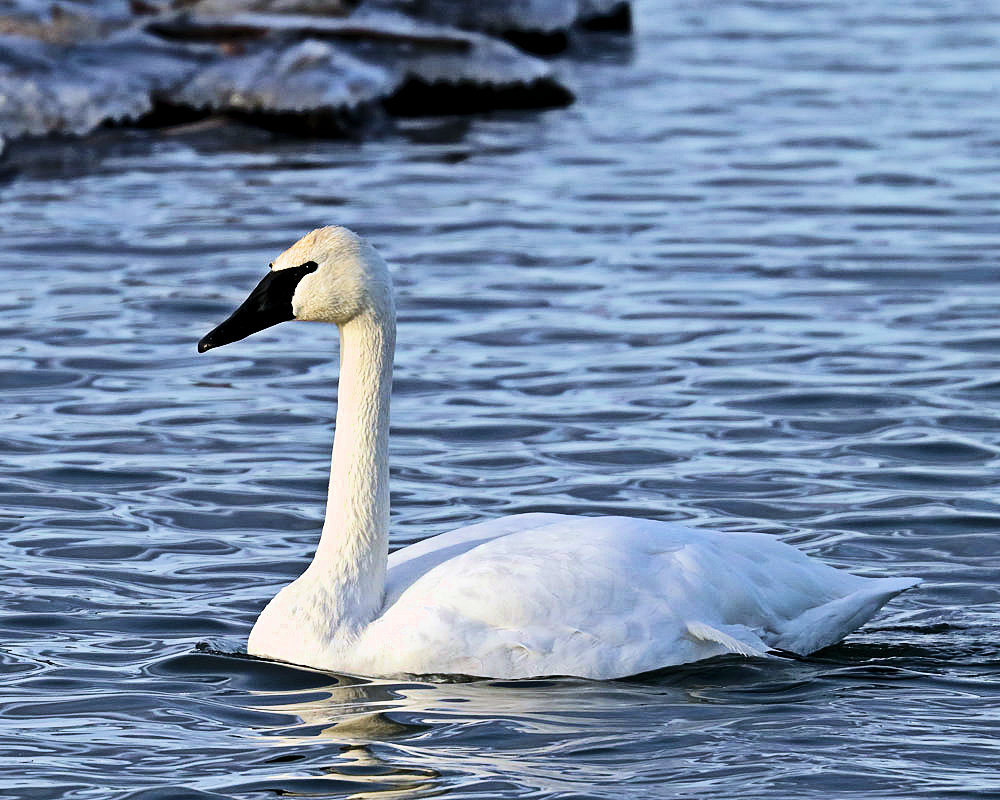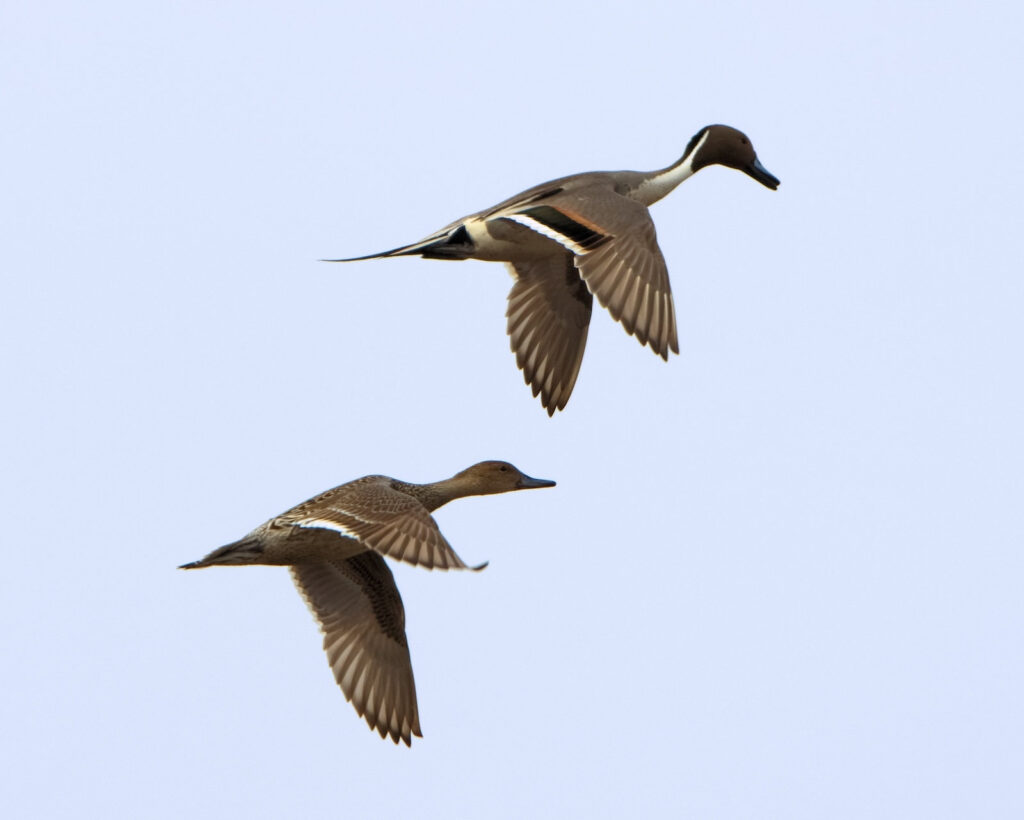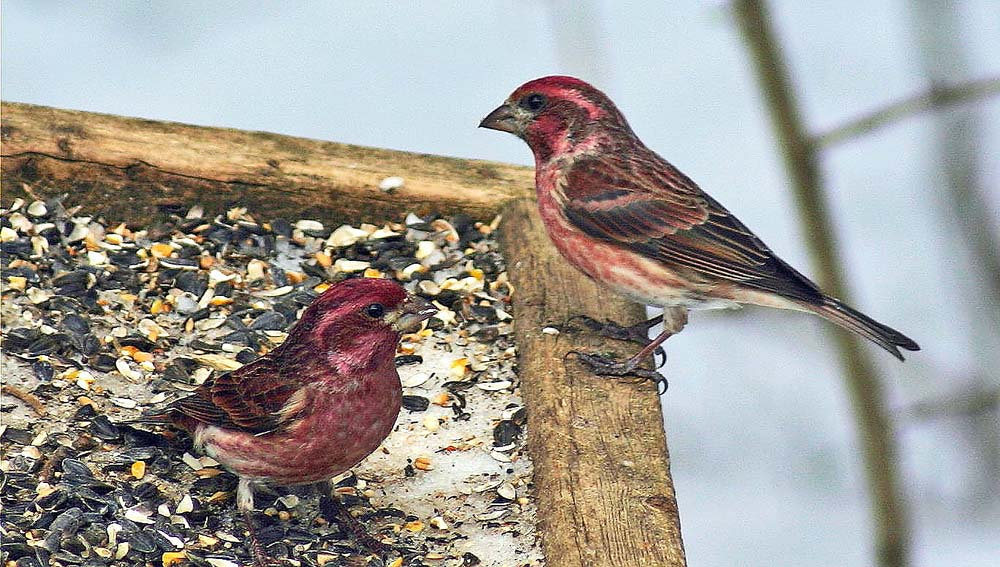Prince Edward County, Ontario, Canada
It’s March – What Birds Are Here This month?
While March generally marks the start of the spring migration, the date of arrival is almost as uncertain as the weather itself. Persistent snowfalls and blustery weather will halt the northward movement, while an early spring will prompt the arrival of RED-WINGED BLACKBIRDS, NORTHERN FLICKERS (photo by Derek Dafoe of Belleville), AMERICAN ROBINS, KILLDEER and SONG SPARROWS. As always, it is difficult to determine which species that turn up are indeed early migrants, or simply those that spent the winter here such as RED-WINGED BLACKBIRDS, COMMON GRACKLES and KILLDEERS. However, many of the above species can now be found in Prince Edward County most winters in varying numbers, if food supply has been good. I had over 20 RED-WINGED BLACKBIRDS daily at my feeding station all winter long, and a single ROBIN was also present all winter. Even TREE SWALLOWS may arrive by the end of the month if the weather ends up being warm and sunny.

Depending on how soon winter releases its grip of the ice choked bays and marshes, waterfowl will commence arriving, usually appearing en masse by the end of the month. Although Presqu’ile Provincial Park continues to reign as the best location to see enormous concentrations of migrating waterfowl, there are some areas in Prince Edward County where high numbers may also be expected. You might try your luck at Wellington Harbour where good observing may be had right from the government wharf as the waters of West Lake begin to open. Other dependable areas include Prince Edward Point, Point Petre (Soup Harbour), South Bay, Prince Edward Bay and Smith’s Bay. If the ice continues to disappear, the more sheltered lakes such as Weller’s Bay, Pleasant Bay, North Bay and Huyck’s Bay will also produce interesting numbers. The Weller’s Bay Channel at Barcovan is an area where spectacular numbers can be seen. Right now, the ducks are gathering as the water in Weller’s Bay beyond the channel begins to open up a bit, and large numbers of wintering MUTE SWANS alternate between this location and Presqu’ile Bay, depending on ice conditions. Look also for TRUMPETER SWANS (photo by Ian Barker of Bloomfield), particularly at Barcovan and Wellington Harbour.

To hear the first SONG SPARROW sing at this time of the year is a thrilling experience and a promise of far greater things in the weeks to come. We can look for other sparrows arriving too by the last of the month including FOX SPARROW, VESPER SPARROW and SAVANNAH SPARROW, although the bulk of the sparrows will not arrive until April. EASTERN BLUEBIRDS may also appear this month and it would be wise to have nesting boxes ready for their arrival. Don’t be surprised either if a few warm days produce the distinct calls of an EASTERN PHOEBE.
For the most part though it will be the waterfowl that you should concentrate your efforts on as the bays and lakes prepare for their arrival. The ducks we will see this month are arriving from wintering grounds on the east coast and southern United States, seeking out staging areas along the way where they can rest and feed before continuing on to points north. Over 20 species of waterfowl, including geese and TUNDRA SWANS may turn up at major staging areas such as Presqu’ile. And this is when my favourite duck species, the NORTHERN PINTAIL (Ian Barker of Bloomfield) can be expected to appear.

Patronage at bird feeders may go up and down like a yo-yo as melting snows expose foods in the wild. We should continue to see at least a few of those winter species such as AMERICAN TREE SPARROWS and any others whose presence we had enjoyed through the winter. But joining them may be early SONG SPARROWS and certainly some RED-WINGED BLACKBIRDS.
It was a great winter for birds and we had a number of interesting sightings including numerous BALD EAGLES and plenty of RED-BELLIED WOODPECKERS. Several feeders had PILEATED WOODPECKERS, a species that is turning up with increasing frequency at bird feeders in the winter, and several bird feeder operators had a YELLOW-BELLIED SAPSUCKER that feeders daily from November through February. Also about this past winter were high numbers of AMERICAN TREE SPARROWS, and excellent numbers of DARK-EYED JUNCOS. Overall, it was a dismal winter for northern finches that typically move to our area during crashes in their natural food supply in the boreal forests where many usually remain to nest if their favourite wild food is adequate. Lot of their natural food in the wild where these species normally range. No point expending energy to migrate south to the Bay of Quinte area if there is sufficient food on territory. Regular migrants like PURPLE FINCHES (photo by Terry Sprague) will start appearing at bird feeders this month and these will likely continue through March and into April. Lots of BARRED OWLS this past winter; however, concerned birders are being very careful not to mention the locations of most owl species due to unscrupulous and irresponsible paparazzi harassing them for close-up photos. And if you are one of those who think that most birds go south for the winter, it is interesting to note that over 120 species of birds were seen this year in the Bay of Quinte region between December 1st and February 29th, and that’s only half as many species that showed up across the province this past winter. Winter, for the purposes of record keeping, begins December 1st and ends February 28th (or 29th)
